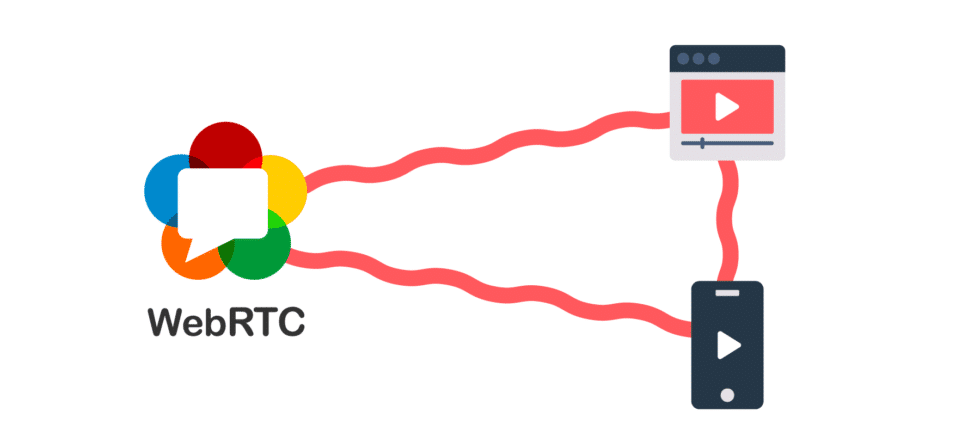
WebRTC Streaming
Web Real-Time Communications (WebRTC) is an open-source project for streamlining real-time audio and video communication between two parties over the Internet. This involves specifications and tools for establishing a connection and transmitting media data between two users. WebRTC is currently supported by Google, Microsoft, Apple, and other browser developers.
More specifically, WebRTC is a set of APIs and protocols which enable media streaming directly within desktop and mobile browsers. In the past, developers would need to use proprietary external plugins or third-party software like Flash for real-time communication, which was inconvenient and inconsistent for users. WebRTC is a standard supported by the World Wide Web Consortium (W3C) and Internet Engineering Task Force (IETF) to promote multimedia capabilities for the web.
How Does WebRTC Work?
WebRTC’s JavaScript APIs allow developers to capture audio and video data, create and manage peer-to-peer connections, and transfer real-time data between these peers. This includes accessing the user’s webcam, microphone, and other hardware to capture media. WebRTC also assists with establishing a connection between peers, which involves locating the other user, bypassing firewalls and other security protections, and enabling bidirectional data transfers.
Along with the APIs, there are also software development kits (SDKs) available. These SDKs allow developers to use WebRTC within native iOS and Android mobile apps and embedded systems as well. Embedded systems include Internet of Thing (IoT) devices like smartwatches, smart speakers, and more. The ability to easily implement WebRTC across various devices and browsers has accelerated its adoption and created a large ecosystem of related open source projects.
While WebRTC is great for real-time communication such as one-on-one calls and small conferences, the specification isn’t designed for scalability. That means most broadcasters choose HLS or MPEG-DASH delivery protocols for live video streaming. These protocols can deliver livestreams with low latency to most devices and browsers. In addition, both of these HTTP-based protocols offer advanced features like closed captioning, digital rights management (DRM), and ad insertion.
Since WebRTC is a peer-to-peer protocol, there needs to be a direct connection between every browser within a media stream. Unless broadcasters use a media server, these direct connections will use too much bandwidth and limit the audience size possible. HTTP-based protocols can stream video content using cloud servers or a content delivery network (CDN) to optimize delivery.
Resi’s Livestream Platform allows broadcasters to efficiently and reliably deliver live and on-demand video content to audiences using HLS or MPEG-DASH. With cloud transcoding, Resi can create multiple renditions of the video stream at varying bitrates to enable adaptive bitrate streaming (ABS), which automatically adjusts video playback based on network conditions. That means broadcasters can cater to each viewer rather than lowering the bitrate to accommodate the peer with the poorest connection.
Resi also built its own protocol called Reliable Streaming Protocol (RSP), which protects against quality loss during transmission. That means broadcasters can use RSP for uploading live streams to the web platform before cloud transcoding and delivery to end-users. Altogether, Resi’s technologies form a simple, yet complete end-to-end video streaming solution.
